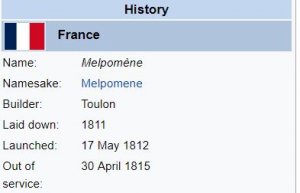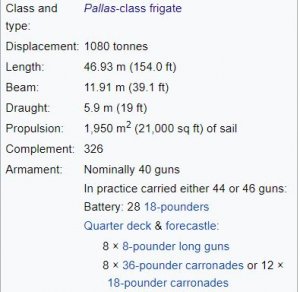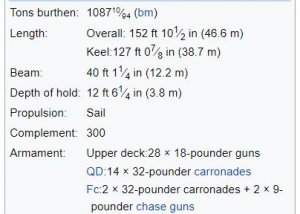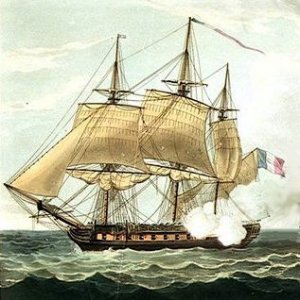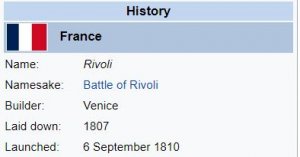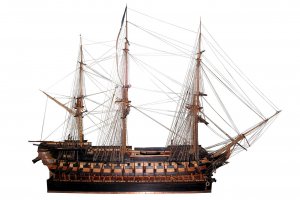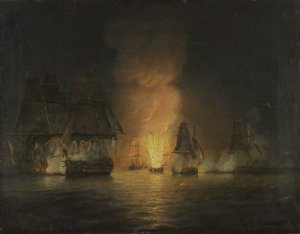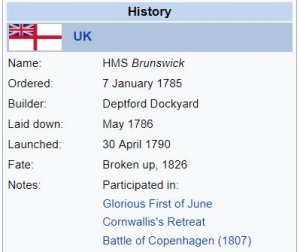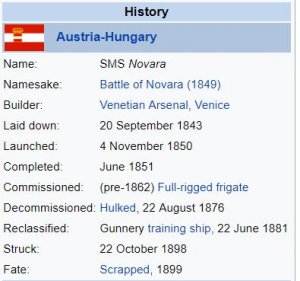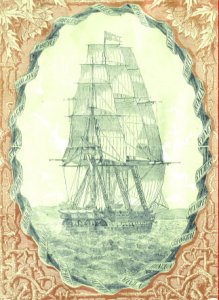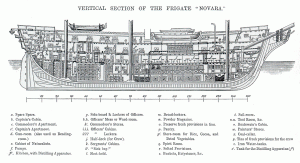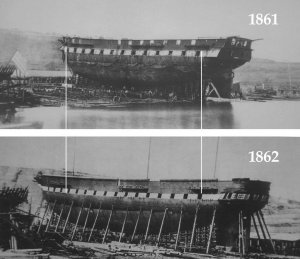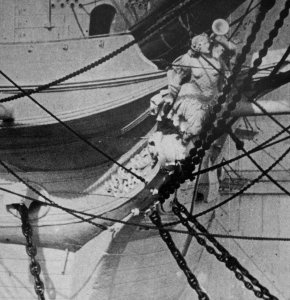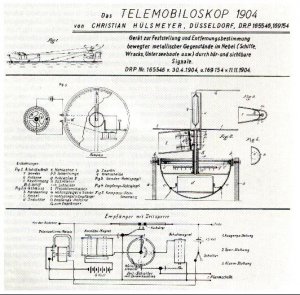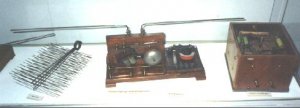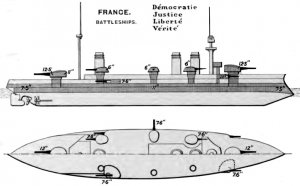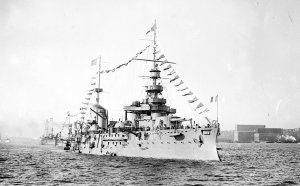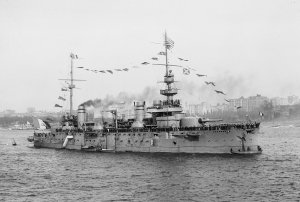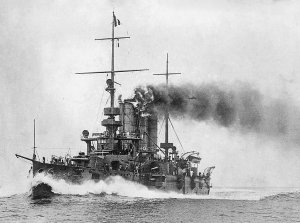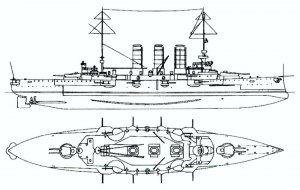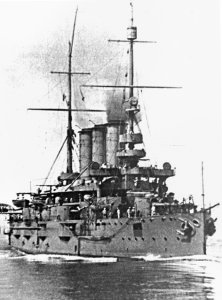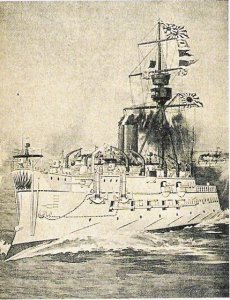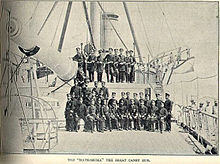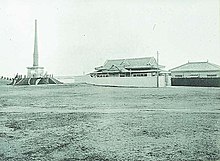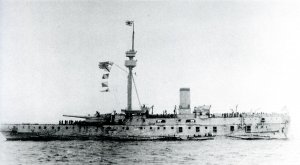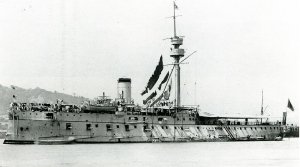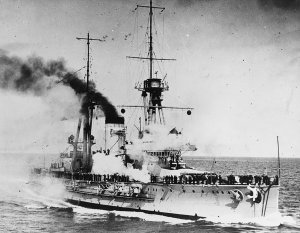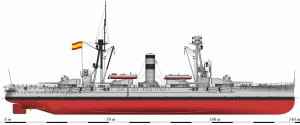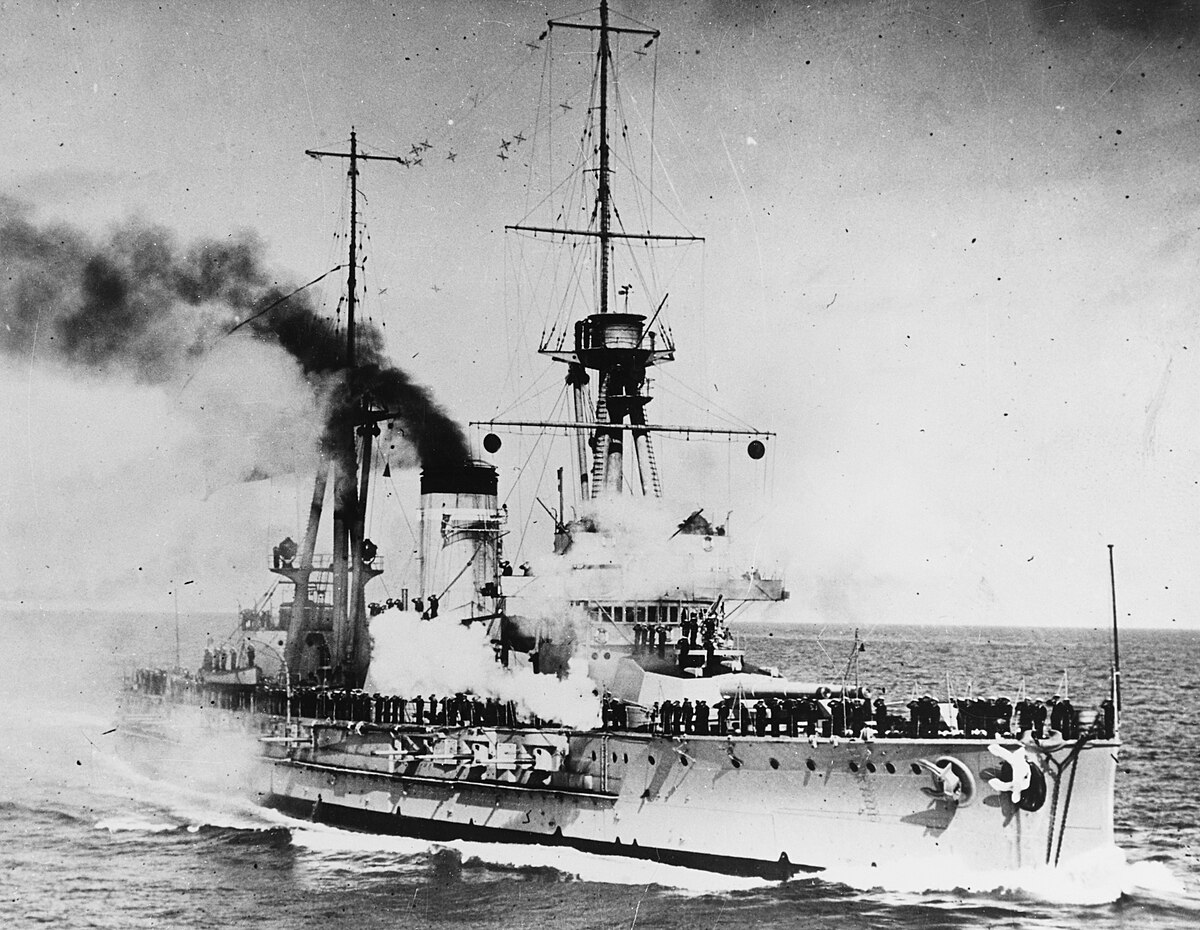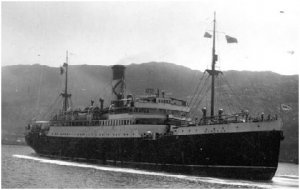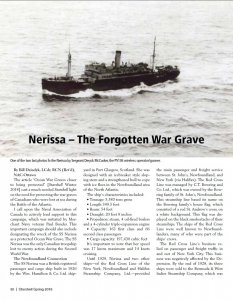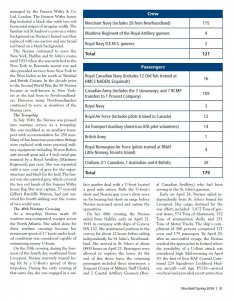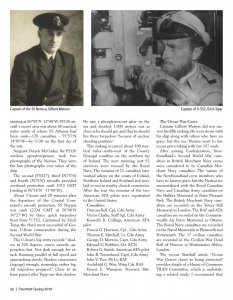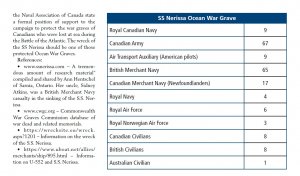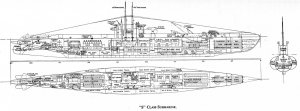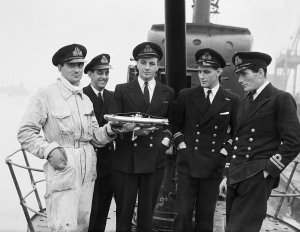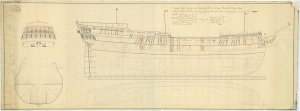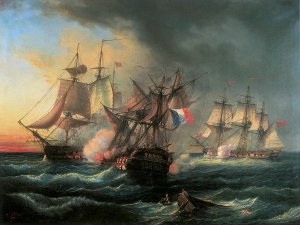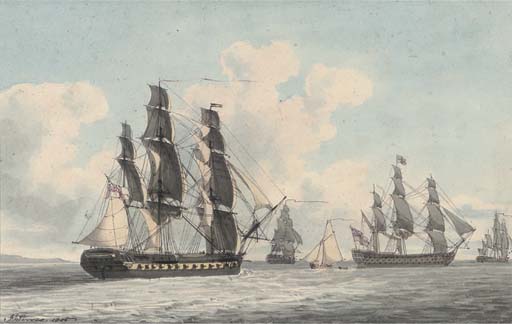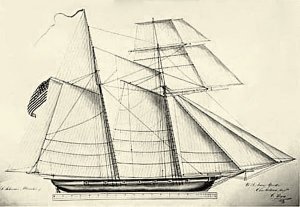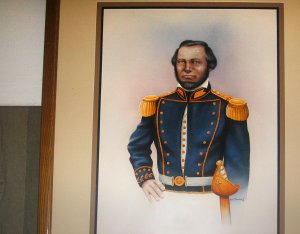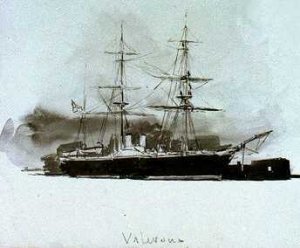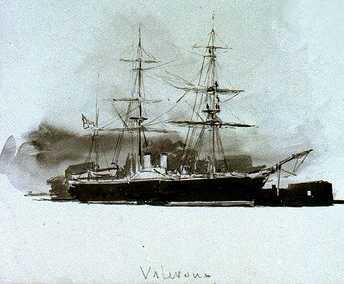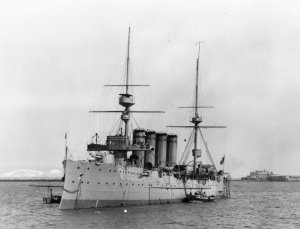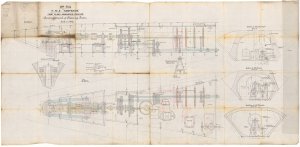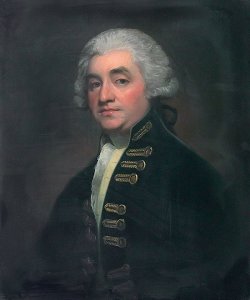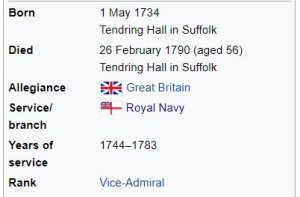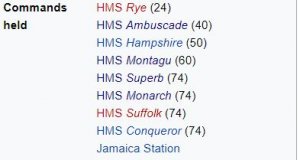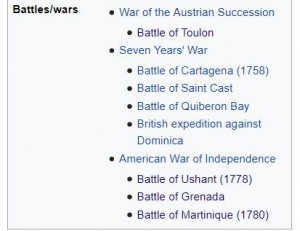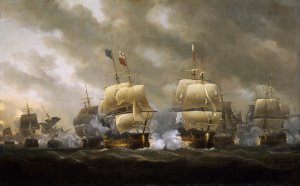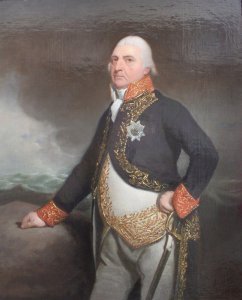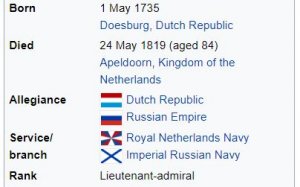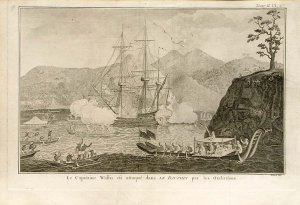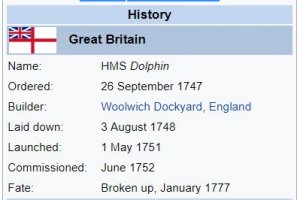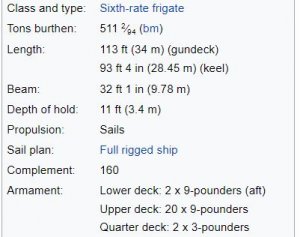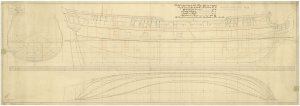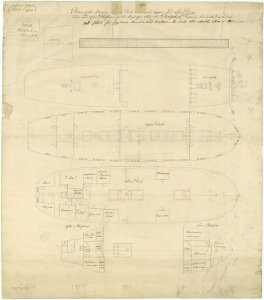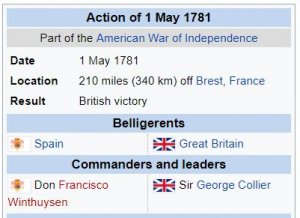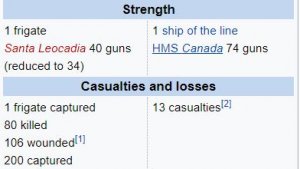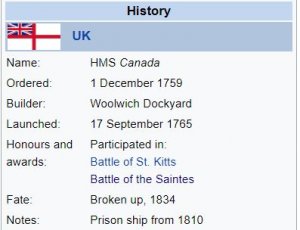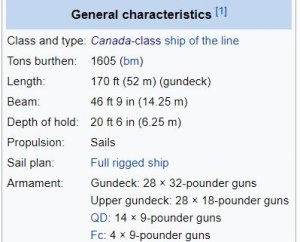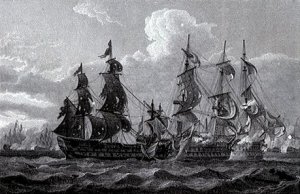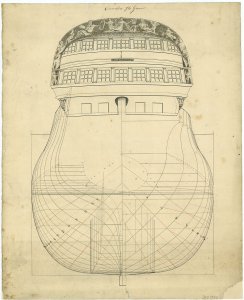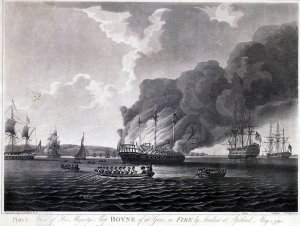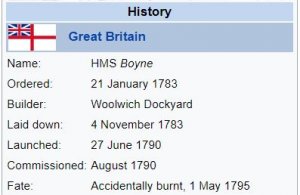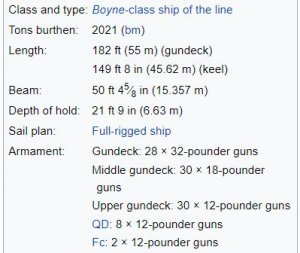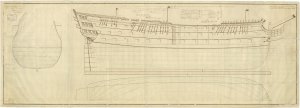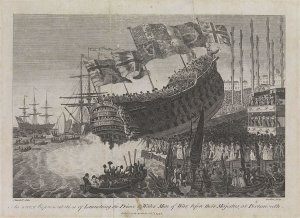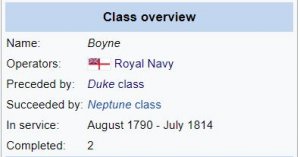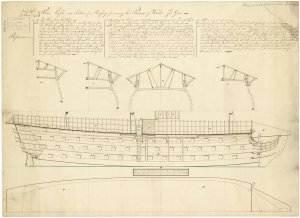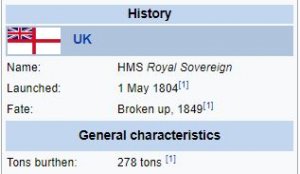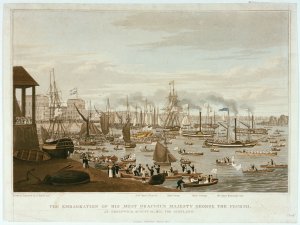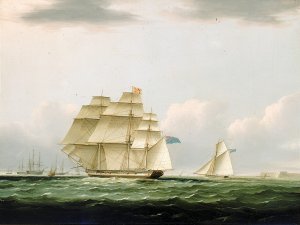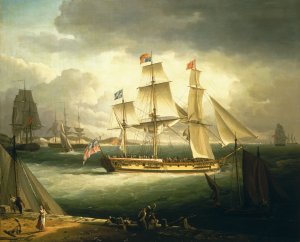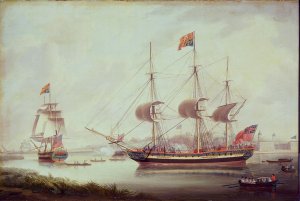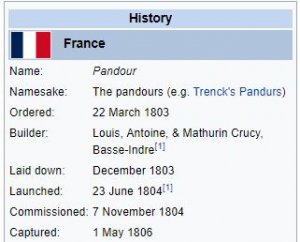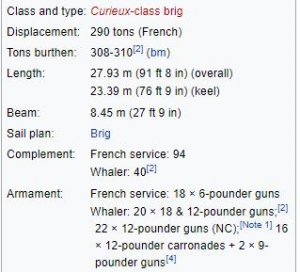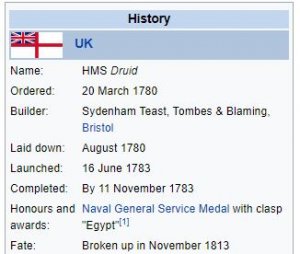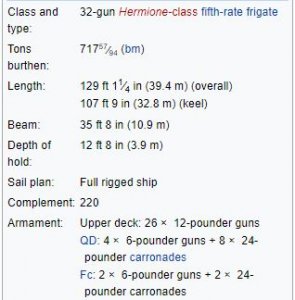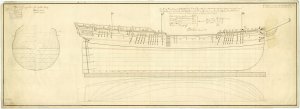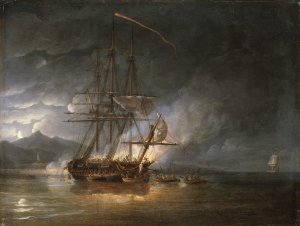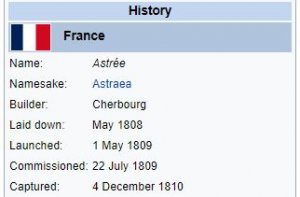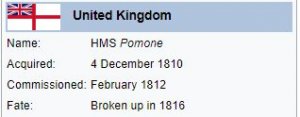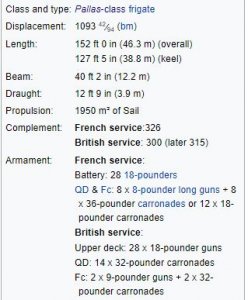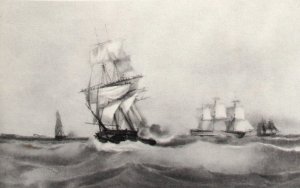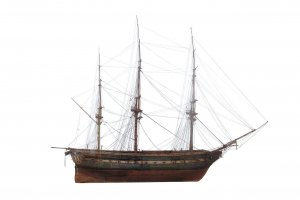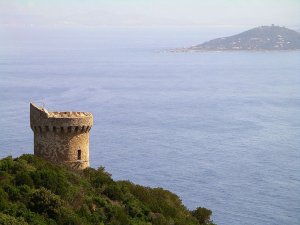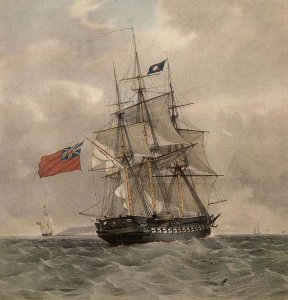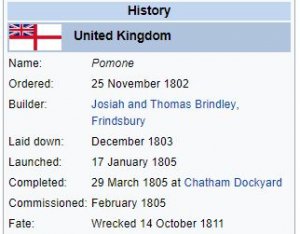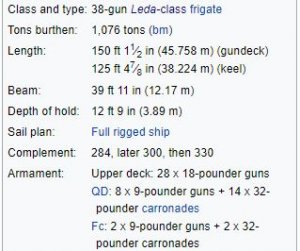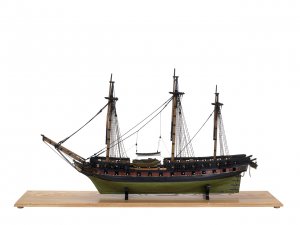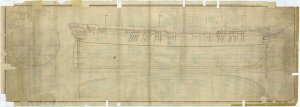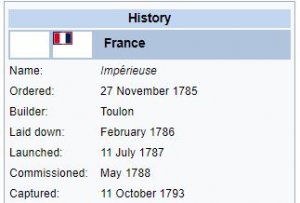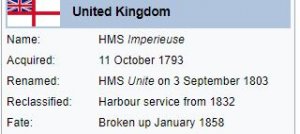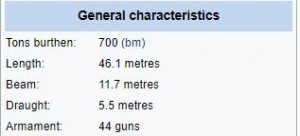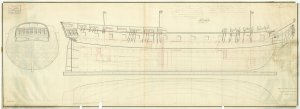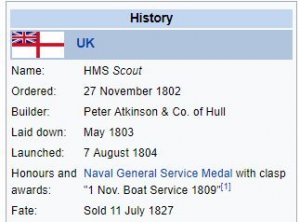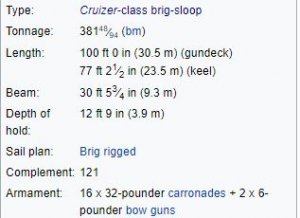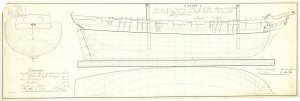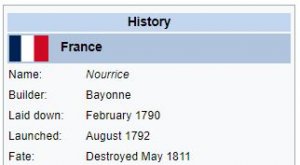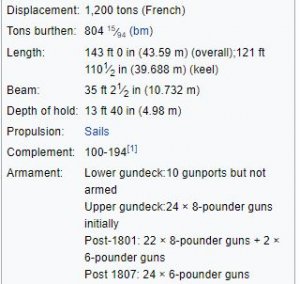Today in Naval History - Naval / Maritime Events in History
30 April 1790 – Launch of HMS Brunswick, a 74-gun third rate ship-of-the-line of the Royal Navy, at Deptford.
HMS Brunswick was a 74-gun third rate ship-of-the-line of the Royal Navy, launched on 30 April 1790 at Deptford. She was first commissioned in the following month under Sir Hyde Parker for the Spanish Armament but was not called into action. When the Russian Armament was resolved without conflict in August 1791, Brunswick took up service as a guardship in Portsmouth Harbour. She joined Richard Howe's Channel Fleet at the outbreak of the French Revolutionary War and was present at the battle on Glorious First of June where she a fought a hard action against the French 74-gun Vengeur du Peuple. Brunswick was in a small squadron under William Cornwallis that encountered a large French fleet in June 1798. The British ships were forced to run into the Atlantic and narrowly avoided capture through a combination of good fortune and some fake signals.
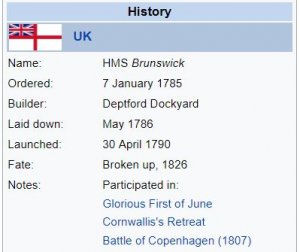
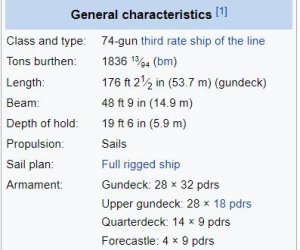
After a five-year spell in the West Indies, Brunswick returned home and was refitted at Portsmouth. In 1807, when Denmark was under threat from a French invasion, Brunswick was part of a task force, under overall command of James Gambier, sent to demand the surrender of the Danish fleet. When the Danes refused to comply, Brunswick joined in with an attack on the capital, Copenhagen. She returned to the Baltic some months later, following the Treaty of Tilsit and, while attached to Richard Goodwin Keats' squadron, she helped with the evacuation of 10,000 Spanish troops from the region. From 1812 Brunswick was on harbour service, and in 1826 she was broken up
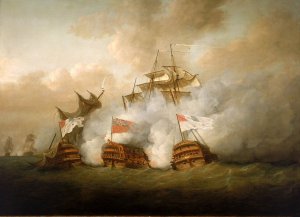
HMS Brunswick fighting the Achille and Vengeur du Peuple simultaneously
Construction and armament
Brunswick was a 74-gun, third-rate ship-of-the-line ordered on 7 January 1785. She was the first of her type built following the American Revolutionary war and was significantly larger than previous 74s. The Admiralty approved the design on 10 January 1785 and work began in May 1786 when her keel, of 145 feet 2 inches (44.2 m) was laid down at Deptford. When finished, she was 176 feet 0 inches (53.6 m) along the gun deck, had a beam of 48 feet 8 inches (14.8 m) and a depth in the hold of 19 feet 6 inches (5.9 m). She was 1,82872⁄94 tons burthen and drew between 13 ft 0 in (3.96 m) and 16 ft 7 in (5.05 m).
The ship was initially designed to carry a main battery of twenty-eight 32-pounder (15 kg) guns on the lower deck and thirty 18-pounder (8.2 kg) on the upper deck, with a secondary armament of twelve 9-pounder (4.1 kg) guns on the quarter deck and four on the forecastle. She was launched on 30 April 1790 and taken down the Thames to Woolwich where she was fitted-out between 17 May and 18 June. Her build and first fitting cost the Admiralty£47,781.0.0d.
In December 1806, Brunswick's armament was changed so that all her guns fired a 24-pounder (11 kg) shot. This meant that the guns on the lower deck were downgraded while those on the upperdeck were upgraded. The guns on the forecastle were replaced with two 24-pounder long guns and four 24-pounder carronades, and on the quarter deck, the twelve 9-pounders were removed to make way for two long guns and ten carronades, all 24-pounders. The great guns on the upper decks were mounted on Gover carriages which enabled them to be handled by fewer men.
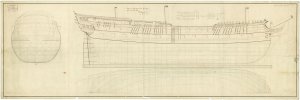
Scale: 1:48. Plan showing the body plan with stern board outline, sheer lines, and longitudinal half-breadth for building Brunswick (1790), a 74-gun Third Rate, two-decker

Scale: 1:48. Plan showing the inboard profile for Brunswick (1790), a 74-gun Third Rate, two-decker, built at Deptford Dockyard

Brunswick (centre), following her engagement with Vengeur du Peuple (left) and Achille (right), on 1 June 1794
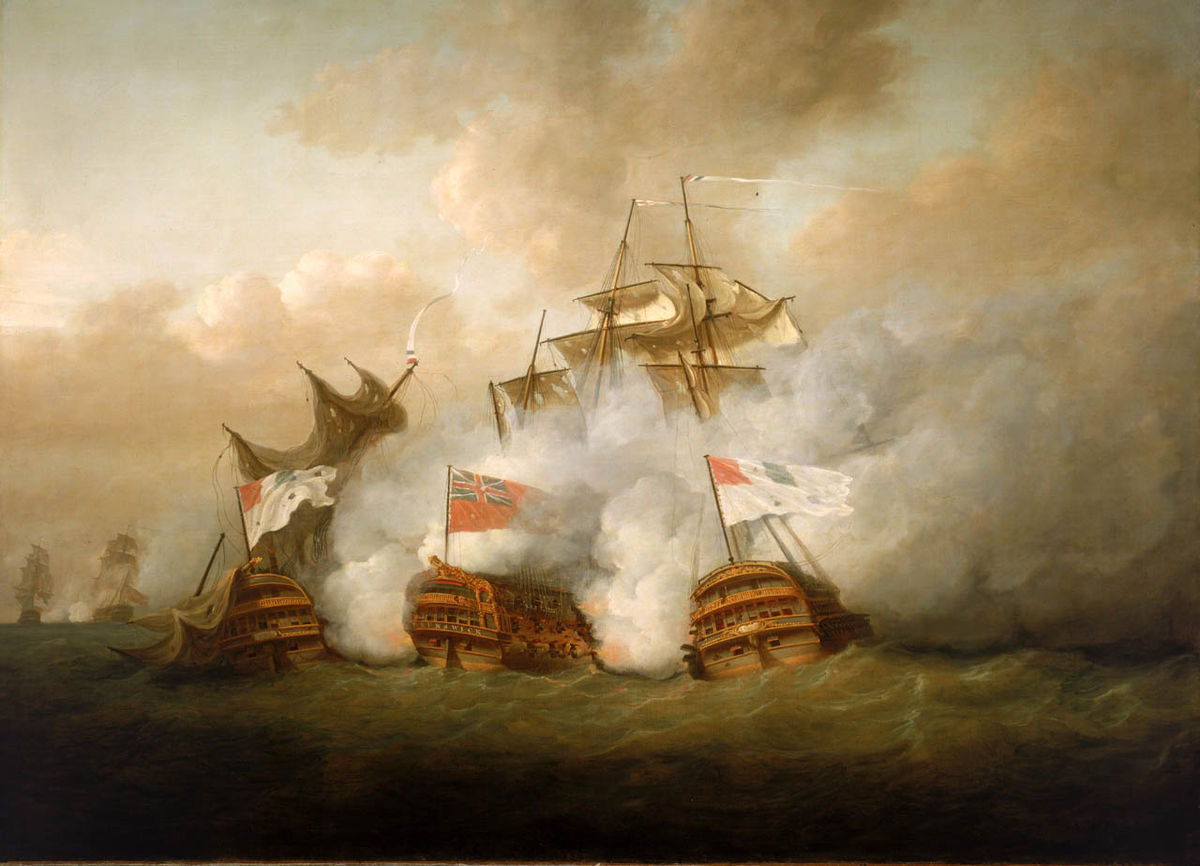
 en.wikipedia.org
https://collections.rmg.co.uk/colle...3;browseBy=vessel;vesselFacetLetter=B;start=0
en.wikipedia.org
https://collections.rmg.co.uk/colle...3;browseBy=vessel;vesselFacetLetter=B;start=0
30 April 1790 – Launch of HMS Brunswick, a 74-gun third rate ship-of-the-line of the Royal Navy, at Deptford.
HMS Brunswick was a 74-gun third rate ship-of-the-line of the Royal Navy, launched on 30 April 1790 at Deptford. She was first commissioned in the following month under Sir Hyde Parker for the Spanish Armament but was not called into action. When the Russian Armament was resolved without conflict in August 1791, Brunswick took up service as a guardship in Portsmouth Harbour. She joined Richard Howe's Channel Fleet at the outbreak of the French Revolutionary War and was present at the battle on Glorious First of June where she a fought a hard action against the French 74-gun Vengeur du Peuple. Brunswick was in a small squadron under William Cornwallis that encountered a large French fleet in June 1798. The British ships were forced to run into the Atlantic and narrowly avoided capture through a combination of good fortune and some fake signals.


After a five-year spell in the West Indies, Brunswick returned home and was refitted at Portsmouth. In 1807, when Denmark was under threat from a French invasion, Brunswick was part of a task force, under overall command of James Gambier, sent to demand the surrender of the Danish fleet. When the Danes refused to comply, Brunswick joined in with an attack on the capital, Copenhagen. She returned to the Baltic some months later, following the Treaty of Tilsit and, while attached to Richard Goodwin Keats' squadron, she helped with the evacuation of 10,000 Spanish troops from the region. From 1812 Brunswick was on harbour service, and in 1826 she was broken up

HMS Brunswick fighting the Achille and Vengeur du Peuple simultaneously
Construction and armament
Brunswick was a 74-gun, third-rate ship-of-the-line ordered on 7 January 1785. She was the first of her type built following the American Revolutionary war and was significantly larger than previous 74s. The Admiralty approved the design on 10 January 1785 and work began in May 1786 when her keel, of 145 feet 2 inches (44.2 m) was laid down at Deptford. When finished, she was 176 feet 0 inches (53.6 m) along the gun deck, had a beam of 48 feet 8 inches (14.8 m) and a depth in the hold of 19 feet 6 inches (5.9 m). She was 1,82872⁄94 tons burthen and drew between 13 ft 0 in (3.96 m) and 16 ft 7 in (5.05 m).
The ship was initially designed to carry a main battery of twenty-eight 32-pounder (15 kg) guns on the lower deck and thirty 18-pounder (8.2 kg) on the upper deck, with a secondary armament of twelve 9-pounder (4.1 kg) guns on the quarter deck and four on the forecastle. She was launched on 30 April 1790 and taken down the Thames to Woolwich where she was fitted-out between 17 May and 18 June. Her build and first fitting cost the Admiralty£47,781.0.0d.
In December 1806, Brunswick's armament was changed so that all her guns fired a 24-pounder (11 kg) shot. This meant that the guns on the lower deck were downgraded while those on the upperdeck were upgraded. The guns on the forecastle were replaced with two 24-pounder long guns and four 24-pounder carronades, and on the quarter deck, the twelve 9-pounders were removed to make way for two long guns and ten carronades, all 24-pounders. The great guns on the upper decks were mounted on Gover carriages which enabled them to be handled by fewer men.

Scale: 1:48. Plan showing the body plan with stern board outline, sheer lines, and longitudinal half-breadth for building Brunswick (1790), a 74-gun Third Rate, two-decker

Scale: 1:48. Plan showing the inboard profile for Brunswick (1790), a 74-gun Third Rate, two-decker, built at Deptford Dockyard

Brunswick (centre), following her engagement with Vengeur du Peuple (left) and Achille (right), on 1 June 1794




